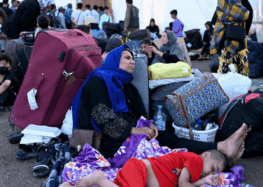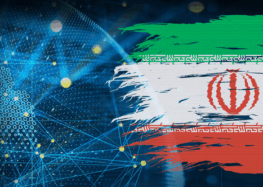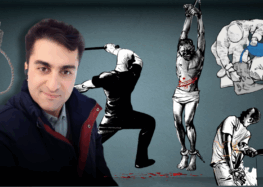Karroubi’s Home Vandalized by Plainclothes Forces Supported By The Government

The attack on Karroubi's home and spraying its walls with red paint happens only a few weeks after his son Ali Karroubi was arrested during the February 11, 2009 gatherings to commemorate Islamic Revolution.
The International Campaign for Human Rights in Iran expresses its deep concern about an attack on the home of Mehdi Karroubi, which is a clear sign of the spread of violence and hate by plainclothes forces who, unfortunately, enjoy the support of security and police structures. Spraying red paint on former Parliament Speaker Mehdi Karroubi’s home is a direct and hateful threat containing the message that if his activities continue, his or his family’s blood will be shed.
Seyed Mehdi Karroubi is the third person to suffer such attacks on his home, after similar events took place on the residences of another presidential candidate, Mir Hossein Mousavi, and Nobel Peace Prize Laureate Shirin Ebadi.
In similar actions, plainclothes forces wrote slogans and threats on Shirin Ebadi’s residence walls, calling her a mercenary of western countries. Ebadi also reported phone calls threatening her or her family’s lives. Telephone threats on Ebadi’s life increased to the point where official authorities asked her to use bodyguards. Even so, Iranian security organizations never took any steps to find those who posed the threats.
Previously, during a visit to the city of Qazvin, plainclothes forces shot bullets at Mehdi Karroubi’s car. Considering that the shots were fired in the presence of IRGC members, it seems that they supported the act. According to someone close to Mehdi Karroubi who talked to the International Campaign for Human Rights in Iran about that incident, if Karroubi’s car had not been bulletproof, the bullets could have cost him his life.
One of the placards the radical group gathered outside Karroubi’s home were carrying said “People’s Headquarters for the Punishment of Sedition Leaders.” The term “sedition leaders” was previously used by some individuals holding very high positions inside the Islamic Republic of Iran, such as Ayatollah Jannati, member of Iran’s Guardian Council and several IRGC military commanders. Use of such terms strengthens speculations that the vigilante forces may enjoy coordination with the IRGC.
On another placard, Karroubi is named “a tool in the hand of Mossad,” Israel’s intelligence organization. According to eyewitnesses, the vigilante group who vandalized the walls of Karroubi’s residence have done so in coordination with the police, as police forces were present from the very first moments of the gathering outside Karroubi’s home.
Using symbols as a means for threatening Karroubi is also reminiscent of the murder of Mir Hossein Mousavi’s nephew during the Ashura gatherings. No suspects have been identified by Iranian security organizations in that murder case, but Iranian affairs analysts believe that his murder was a direct message to Mousavi to forgo continuation of his activities.
The attack on Karroubi’s home and spraying its walls with red paint happens only a few weeks after his son Ali Karroubi was arrested during 11 February 2009 gatherings to commemorate the Islamic Revolution. Ali Karroubi was arrested and transferred to a mosque where he was put under physical torture. The violence unleashed on Ali Karroubi caused his mother, Fatemeh Karroubi, to write a letter to Seyed Ali Khamanei, Iran’s Supreme Leader. In her letter Mrs. Karroubi pointed out that the men who attacked her son had threatened him with rape. Reacting to reports of Ali Karroubi’s torture and just as photographs of torture marks on Ali Karroubi’s body were released, Tehran’s Prosecutor announced that he would have to prove that he had been tortured. This clearly shows that not only there is no will for confronting the wrongdoers, and that such individuals enjoy strong support from high ranking Iranian Judiciary and political officials.
The International Campaign for Human Rights in Iran also demands that Iranian government cease official propagation of violence and support of aggressors, and to instead introduce the 15 June 2009 perpetrators of violence on Tehran University dormitories. Additionally, the Campaign asks the Iranian government to take necessary action to identify the real responsible individuals in the Kahrizak Detention Center tragedy, ensuring pursuit of those who were directly involved in the torture of prisoners or those upon whose orders the heinous actions at the detention center were carried out.






